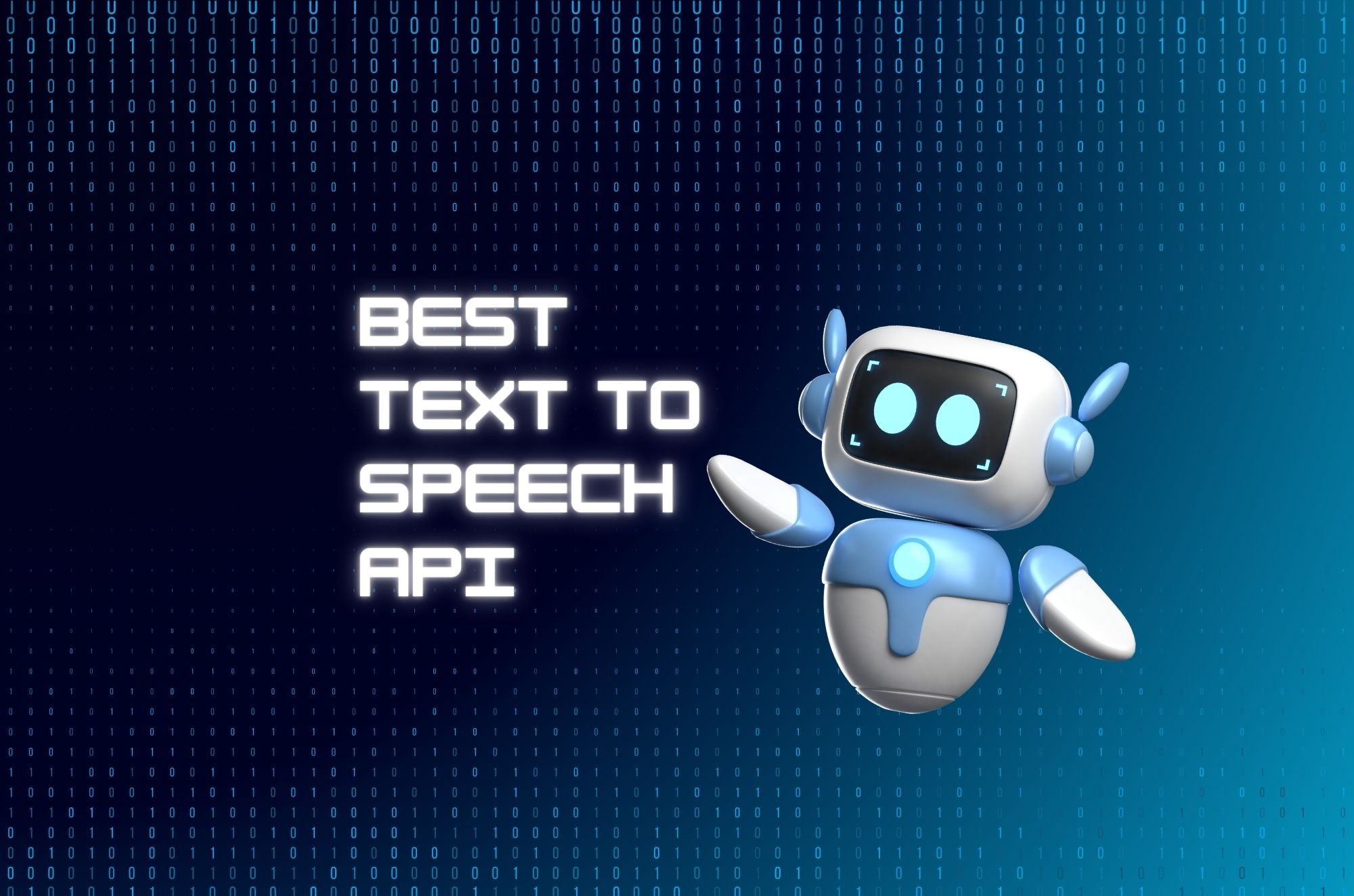Introduction: IVR Systems
My first experience with an Interactive Voice Response (IVR) system was far from ideal—it was clunky, mechanical, and, honestly, exhausting. But when I experienced a modern IVR system integrated with text-to-speech (TTS) technology, the difference was like night and day. The interaction felt natural, almost like I was speaking to an actual person. That’s when I realized just how transformative TTS can be for customer experience.
In this article, we’ll dive into how TTS is reshaping IVR systems and how businesses can leverage this tech to enhance customer service—let’s get started!
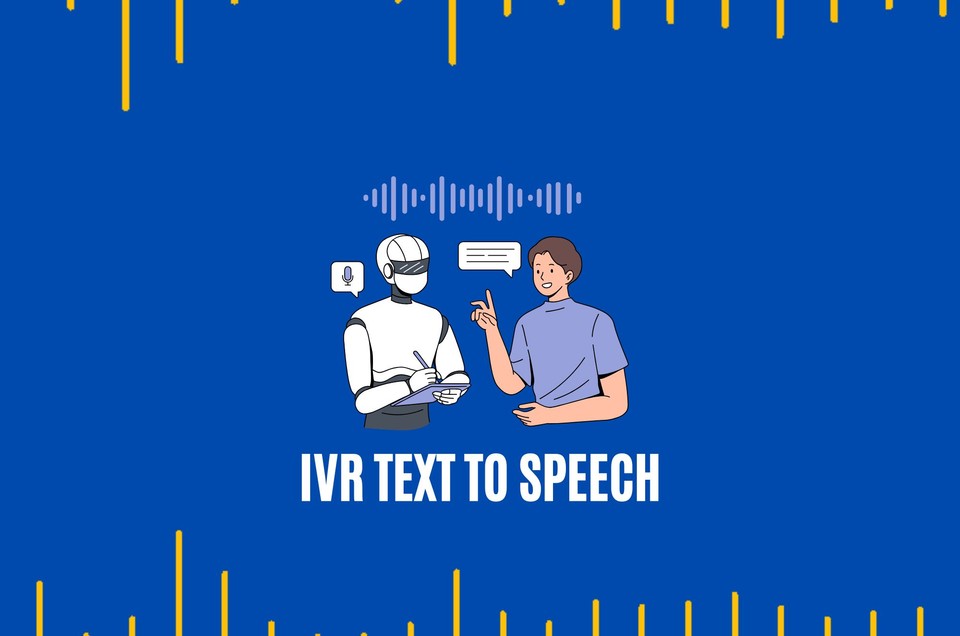
Understanding IVR Systems
What is an IVR System?
If you’ve ever dialed a customer service number and heard an automated voice welcoming you, you’ve encountered an IVR system. IVR (Interactive Voice Response) systems are automated call-handling technologies that interact with callers via pre-recorded IVR voice prompts or TTS and keypad inputs.
These systems have long been a backbone of customer service, enabling businesses to handle large volumes of inquiries. IVRs help efficiently direct callers to the appropriate person or department, reducing customer wait times and ensuring issues are resolved as smoothly as possible.
How IVR Systems Work
IVR systems are all about guiding callers. They begin by greeting you, offering a set of menu options, and waiting for your response—either through keypad inputs or voice recognition. Imagine calling your bank to check your account balance. With an IVR system in place, you’ll be prompted to enter your account number, and then be routed accordingly. The system might even provide your balance information without needing a human voice, all thanks to TTS technology.
Common Applications of IVR Systems
Appointment Scheduling: Setting up doctor visits or home services has never been easier.
Payments and Account Inquiries: From paying your electricity bill to finding out your bank balance, IVR systems handle it all.
Order Tracking: Curious about that online order you placed? IVRs provide real-time status updates without waiting for a human voice.
These applications are part of what makes IVRs so valuable—but what makes them even better is text-to-speech technology.
Text-to-Speech Technology: Bringing IVR to Life
What is Text-to-Speech?
Text-to-speech (TTS) is a technology that converts written text into spoken words using advanced AI. It sounds simple, but its potential for improving customer interactions is limitless. No more robotic, unchanging voice prompts; instead, TTS delivers dynamic responses, adapting in real time.
How Text-to-Speech Works
Ever wonder how TTS can sound so natural? It’s all about speech synthesis. The system takes the written text, breaks it down into syllables, processes the correct pronunciation, and synthesizes the speech. The best part? The voices are highly customizable—brands can choose tones that match their unique identity.
Thanks to the incredible advancements in NLP (natural language processing) and AI, TTS has reached a point where it’s hard to differentiate between a synthesized voice and a real one. This evolution has opened up a whole new world for businesses.
Text-to-Speech vs. Pre-Recorded Messages
Traditional IVR systems use pre-recorded messages. They work, but they lack flexibility—changing a message means re-recording and re-uploading new audio files which takes time and money. TTS, on the other hand, lets you make instant updates. Want to tweak your IVR script? Just type it in, and it’s done. Plus, TTS provides a more personalized, engaging experience.
Benefits of Using Text-to-Speech in IVR Systems
1. Improved Customer Experience
With TTS in your IVR, customers get a more natural experience. Imagine a caller wanting to check their account balance—a well-tuned IVR voice guides them through every step, sounding friendly and human, rather than robotic and mechanical. It makes all the difference in maintaining customer satisfaction.
2. Cost Savings
A TTS-enabled Interactive Voice Response system can drastically reduce operational costs. How? By automating mundane tasks and minimizing the need for live agents. Less time on repetitive inquiries means more efficiency, fewer agents on the phone, and more savings in your pocket.
3. Scalability and Flexibility
Have you ever dreaded updating your call center messages because of the hassle involved? With TTS, you can make changes to the IVR voice prompts quickly—no re-recording, no waiting. TTS can also easily handle peak call volumes, providing information smoothly without tying up your resources.
4. Multilingual Support
Businesses today serve customers from all around the world, and text to speech allows you to meet everyone’s needs. Whether it’s Spanish, French, or Mandarin, TTS can generate speech in multiple languages seamlessly, helping your IVR (Interactive Voice Response) become a versatile tool that knows no boundaries.
5. Faster Updates and Changes
Keeping your IVR scripts up-to-date is important. With TTS, it’s a breeze. Need to make adjustments to reflect a new policy or service? Update the text, and you’re ready to go. It’s fast, efficient, and keeps your system relevant.
Considerations When Implementing Text-to-Speech in IVR Systems
1. Voice Quality and Naturalness
Not all TTS systems are created equal. If you want to avoid sounding like a dated robotic system, it’s crucial to invest in high-quality, natural-sounding TTS. The right IVR voice—one that matches your brand’s tone—can elevate your customer service.
2. Integration with Existing Systems
Bringing in TTS isn’t just a plug-and-play scenario. You’ll want to ensure that the TTS software integrates smoothly with your current infrastructure. A clunky integration can lead to downtime or a bad customer experience, so take time to test the system before launching.
3. Data Security and Privacy
TTS systems may collect or store customer data, so ensure that the platform complies with applicable laws regarding data security and privacy. Advanced speech recognition in TTS can even assist with identity verification—a neat, secure way to enhance customer interactions.
Leading Text-to-Speech APIs for IVR Systems
1. Fliki Text-to-Speech API
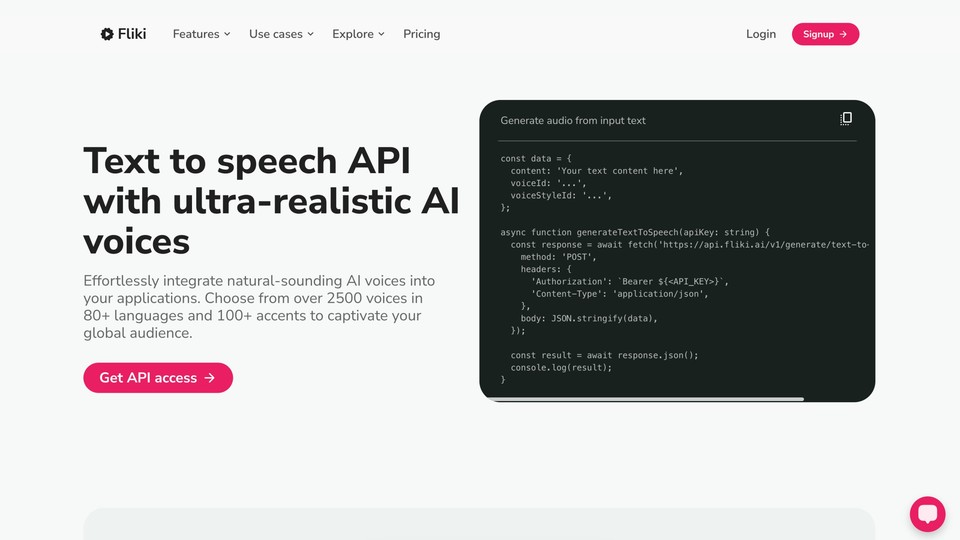
Fliki stands out with ultra-realistic voices and emotional tone options. Imagine adding empathy to your IVR—having IVR voices that express excitement, concern, or calmness, depending on the context. This kind of personalization is a game-changer for customer experience. Fliki's TTS is not only ultra-realistic but also comes with an expansive library of over 2,500 voices in 80+ languages. This wide variety makes it easier for businesses to find a perfect match for their brand, ensuring a consistent and relatable customer experience. Additionally, Fliki offers voice cloning in 29 languages, which is perfect for companies that want to maintain a unique, recognizable IVR voice across all customer interactions. The emotional tone feature, allowing expressions such as excitement, sadness, or calmness, can make your IVR truly resonate with callers on a personal level.
Integration with Fliki's API is designed to be seamless, regardless of whether you’re incorporating it into a small-scale project or a large customer service setup. Fliki’s API documentation is easy to follow, making setup quick and efficient. With Fliki, businesses can implement personalized, high-quality IVR voices, providing an unmatched layer of engagement.
2. Google Cloud Text-to-Speech API
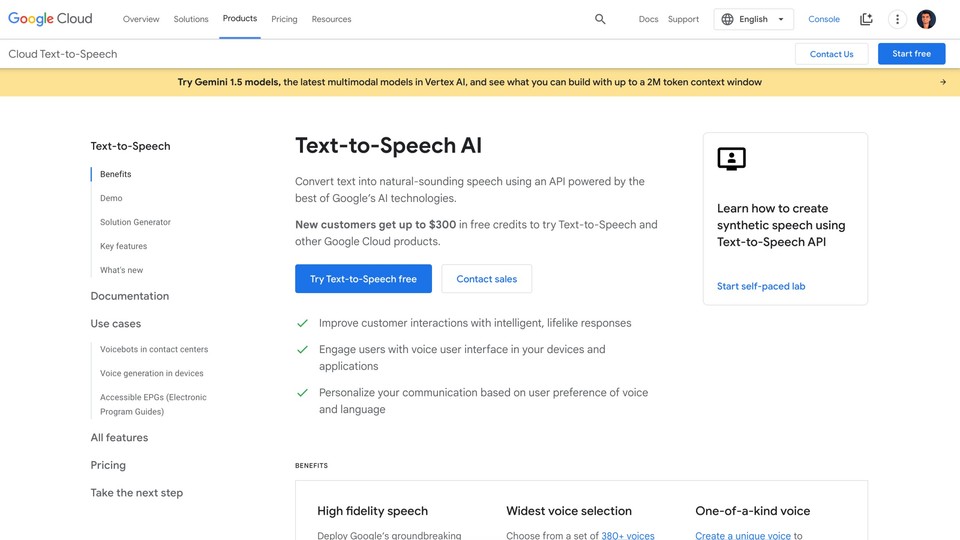
Backed by DeepMind’s AI, Google’s TTS brings quality to the table with over 380 voices across 50 languages. Its customization options are perfect for brands seeking to create a distinct voice identity. Google’s standout feature is its custom voice creation, where brands can use their own audio samples to create unique, highly personalized voices. This feature is useful for companies looking to maintain a consistent audio identity across all their channels. Additionally, Google supports SSML (Speech Synthesis Markup Language), which allows for advanced control over voice output—such as adding pauses, emphasis, or even altering pronunciation—giving businesses more creative power to refine the customer experience.
Google's TTS API is also known for its high reliability and scalability, making it a preferred choice for large-scale enterprises that need a stable, efficient voice solution. With Google Cloud's infrastructure backing it, you also benefit from a highly secure and robust system that guarantees quality performance even during high call volumes.
3. Murf Text-to-Speech API
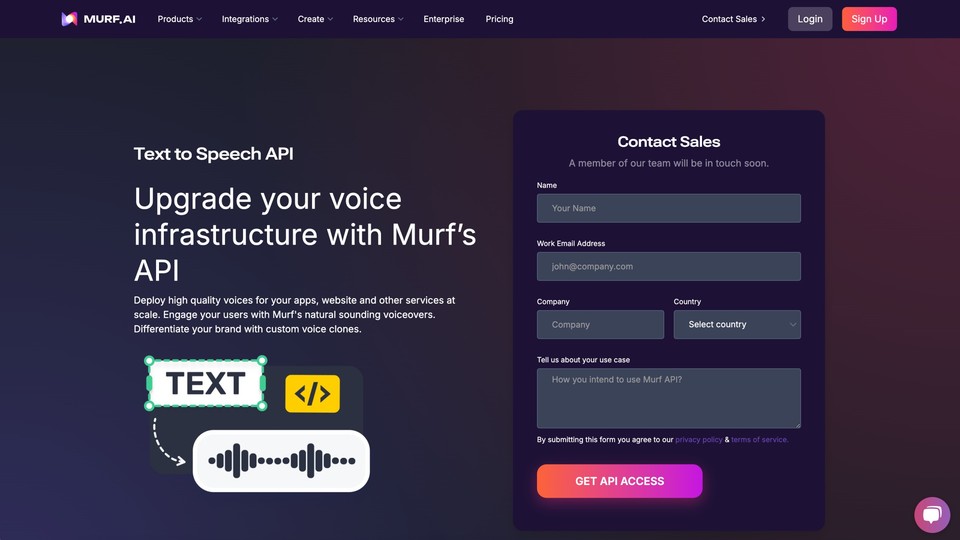
Murf might not have as many languages as some competitors, but it excels at brand consistency. Custom voice cloning ensures that the voice on your IVR matches your brand across different platforms—a great choice for those aiming to establish a cohesive brand presence. Murf specializes in creating a distinct, professional sound that works well in corporate environments, such as eLearning, marketing content, and customer support. This ensures that your brand sounds consistent across every customer touchpoint, providing a professional and recognizable voice.
Murf also supports flexible audio output formats like MP3, WAV, and FLAC, ensuring that businesses can use the audio in different environments seamlessly. Additionally, Murf’s API is well-documented and easy to integrate, whether you’re using it for simple IVR systems or more complex setups involving multiple customer interaction channels. It also offers a range of pitch, speed, and tone adjustments, allowing businesses to fine-tune how they communicate with their customers.
For organizations that prioritize consistent branding and natural-sounding voices, Murf’s TTS API is an excellent choice that provides a balance of quality and customization.
Conclusion: Why TTS is the Future of IVR Systems
At the end of the day, customer experience is everything. And that’s exactly what text-to-speech technology brings to the table—it makes your IVR system more human, flexible, and accessible, without compromising on cost-efficiency. As technology continue to evolve, those that embrace TTS will be the ones that stand out from the competition, creating interactions that are not just functional but truly meaningful.
If you’re ready to upgrade your customer service, consider integrating TTS into your IVR system. It’s not just an upgrade; it’s a revolution in how you communicate with your customers.


